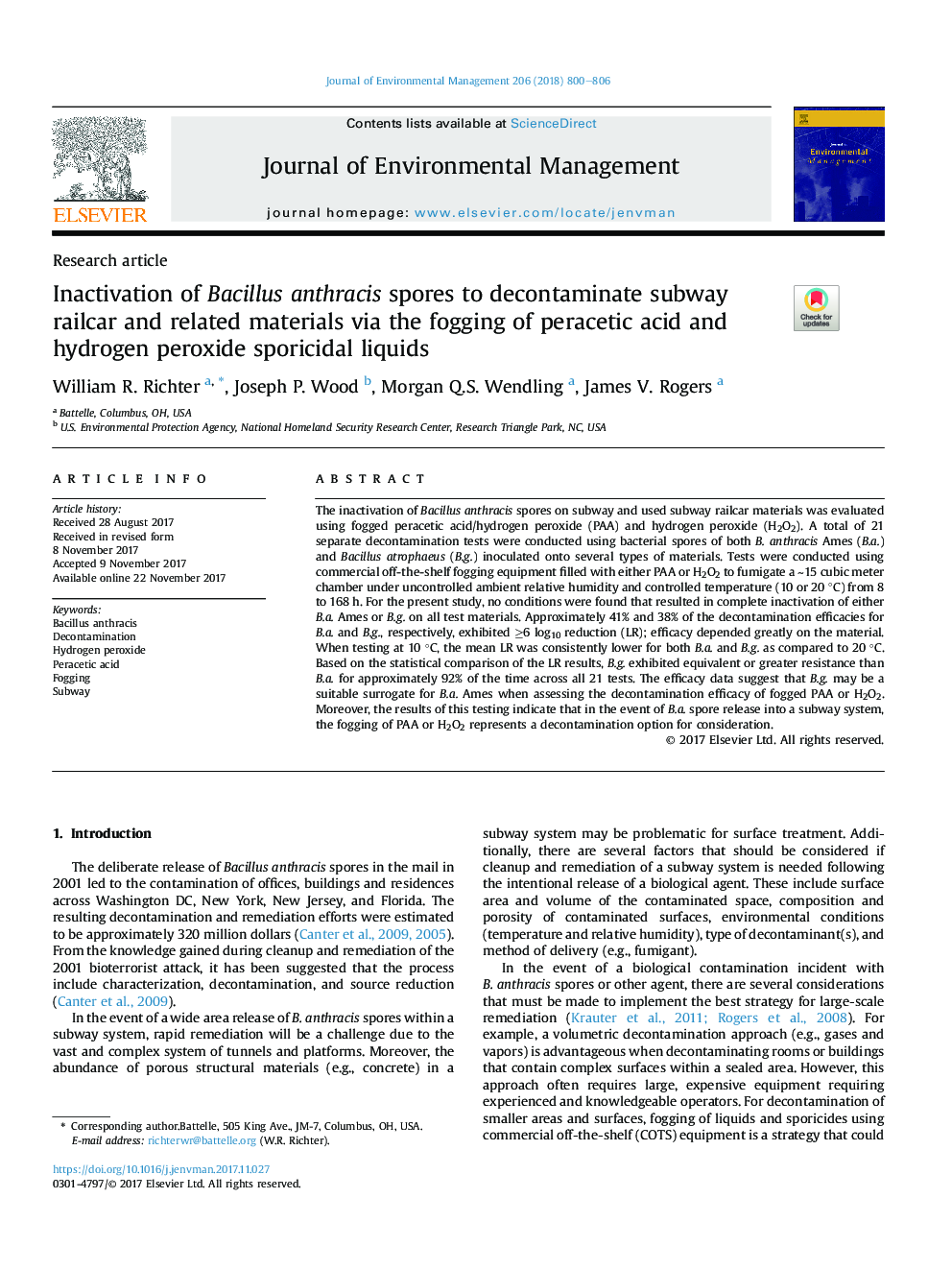| Article ID | Journal | Published Year | Pages | File Type |
|---|---|---|---|---|
| 7478842 | Journal of Environmental Management | 2018 | 7 Pages |
Abstract
The inactivation of Bacillus anthracis spores on subway and used subway railcar materials was evaluated using fogged peracetic acid/hydrogen peroxide (PAA) and hydrogen peroxide (H2O2). A total of 21 separate decontamination tests were conducted using bacterial spores of both B. anthracis Ames (B.a.) and Bacillus atrophaeus (B.g.) inoculated onto several types of materials. Tests were conducted using commercial off-the-shelf fogging equipment filled with either PAA or H2O2 to fumigate a â¼15 cubic meter chamber under uncontrolled ambient relative humidity and controlled temperature (10 or 20 °C) from 8 to 168 h. For the present study, no conditions were found that resulted in complete inactivation of either B.a. Ames or B.g. on all test materials. Approximately 41% and 38% of the decontamination efficacies for B.a. and B.g., respectively, exhibited â¥6 log10 reduction (LR); efficacy depended greatly on the material. When testing at 10 °C, the mean LR was consistently lower for both B.a. and B.g. as compared to 20 °C. Based on the statistical comparison of the LR results, B.g. exhibited equivalent or greater resistance than B.a. for approximately 92% of the time across all 21 tests. The efficacy data suggest that B.g. may be a suitable surrogate for B.a. Ames when assessing the decontamination efficacy of fogged PAA or H2O2. Moreover, the results of this testing indicate that in the event of B.a. spore release into a subway system, the fogging of PAA or H2O2 represents a decontamination option for consideration.
Related Topics
Physical Sciences and Engineering
Energy
Renewable Energy, Sustainability and the Environment
Authors
William R. Richter, Joseph P. Wood, Morgan Q.S. Wendling, James V. Rogers,
